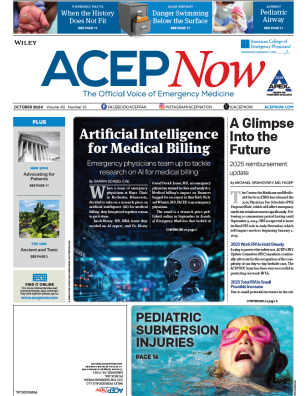Emergency department testing and treatment for chlamydia, gonorrhea, and pregnancy varies widely for adolescents who have been sexually assaulted, according to a retrospective study.
The American Academy of Pediatrics and the Centers for Disease Control and Prevention have published recommendations for testing and prophylaxis of sexually assaulted adolescents. Little is known about these practices in pediatric EDs.
Samantha Schilling, MD, and colleagues from Children’s Hospital of Philadelphia and the University of Pennsylvania, examined testing and prophylaxis practices among adolescents diagnosed with sexual assault in their retrospective study of 38 pediatric EDs that participate in the Pediatric Hospital Information System (PHIS).
Thirty percent of patients were treated at hospitals with sexual assault evaluation pathways, and 64 percent of patients were treated at hospitals with specialized sexual assault evaluation teams. One third of adolescents were treated at hospitals with neither a pathway nor a team.
Less than half (44 percent) of the adolescents received chlamydia, gonorrhea, and pregnancy testing, with performance of all three recommended tests ranging from 6 percent to 89 percent across hospitals.
Just over a third (35 percent) of the adolescents received recommended prophylaxis (chlamydia, gonorrhea, and emergency contraception), and rates of recommended prophylaxis ranged from 0 percent to 57 percent across hospitals.
There was no association between testing and the presence of a specialized sexual assault pathway or team. The overall rate of prophylaxis was 50 percent higher at hospitals with specialized pathways, but did not differ with the presence of specialized teams.
Surprisingly, the presence of a specialized sexual assault team was associated with decreased odds of gonorrhea prophylaxis, according to the November 2, 2015, Pediatrics online report.
“The observed variation in rates of testing and prophylaxis across hospitals suggests underlying differences in the clinical approach to the care of this population,” the researchers note in their article.
“Such variation raises concern over the quality of care for adolescents with sexual assault and highlights the importance of dissemination of guidelines and standardization of medical care for this vulnerable population,” they conclude.
“Our findings suggest that sexual assault pathways show promise in improving adherence to recommended treatments for this population, but further research is needed to better understand the role of pathways in improving quality of care,” they write.
Mark I. Neuman, MD, MPH, from Boston Children’s Hospital and Harvard Medical School, who co-wrote a related editorial, told Reuters Health by email, “Despite consensus regarding sexually transmitted infection (STI) testing and prophylaxis in sexually assaulted children, adherence remains low in U.S. emergency departments. Physicians and hospitals should try to evaluate the barriers to STI testing and prophylaxis among the adolescents they provide care to.”
Pages: 1 2 | Single Page



No Responses to “Wide Variation in the Emergency Department for Testing, Treatment After Teen Sexual Assault”